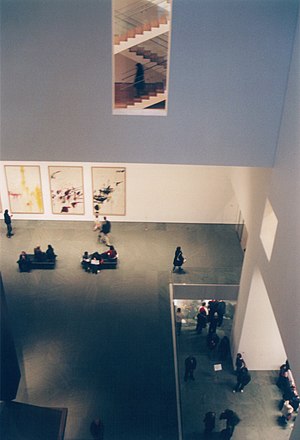Berg’s work is focused on the liminal space where our physical and our virtual lives converge: the space where we will spend more and more time in future
Meeting someone else’s glance is a fleeting, but sometimes intense form of communication. When the British software developer Matt Webb wrote a program to replicate the experience on the Internet, a friend, Jack Schulze, who was teaching at a London design school, offered to ask his students to design the graphics for it.
“I set a really tight brief for the students, and was shown four or five different options,” Mr. Webb recalled. “Most of them were what I had asked for, but one broke the rules of the brief and was exactly what I’d said I didn’t want. It was far and away the best one.”
The rogue proposal was Mr. Schulze’s. They started to collaborate informally, then co-founded the Berg design group in London in 2005, and have since been at the forefront of experiments in humanizing technology.
Six projects by Berg, including digital toys, data visualizations (the presentation of information in graphic forms, like charts) and a Web site for the BBC, are featured in the landmark exhibition “Talk to Me: Design and the Communication between People and Objects,” running through Nov. 7 at the Museum of Modern Art in New York.
“Berg’s work is focused on the liminal space where our physical and our virtual lives converge: the space where we will spend more and more time in future,” said Paola Antonelli, senior curator of architecture and design at MoMA. “I consider them a solid paragon of truly contemporary design practice.”
The underlying premise of Berg’s work and that of other tech-savvy designers in “Talk to Me” is that technology has tremendous potential to enhance our lives, if — and it is a big if — it can be “translated” into forms that make it useful, attractive and accessible. Otherwise even the most promising technological advances risk seeming so opaque and intimidating that we will not make the most of them.
Berg and its peers use design in the traditional way as a tool in the translation process, but they have also developed new means of enabling people to engage with technology, and to feel confident about using it. Mostly Berg does so by making complex technologies seem playful and humorous. The BBC Web site Dimensions (Howbigreally.com) animates historic events by illustrating their effect on satellite maps of familiar areas. Berg recently produced a proposal to make coffee shop receipts more interesting by adding information, such as the latest news headlines from the customers’ favorite Web sites or a list of movies playing at local cinemas. The type of information likeliest to appeal to the customer would be identified from the data captured when they used their credit cards.
“Historically, design has associated itself with utility and problem-solving, but we prefer the landscape of cultural invention, play and excitement,” Mr. Schulze said. “When technology is infinitely complex, and our attention increasingly finite, producing something you can act on and observe at a human and cultural level is hard.”
For Berg’s first four years, Mr. Schulze, 35, who started out in graphic design before studying interaction design, and Mr. Webb, 33, a physicist-turned-programmer, worked on their own, hiring freelance specialists when necessary. In 2009, they decided to expand, and brought in Matt Jones, a digital product and services designer who was employed by Nokia when it became Berg’s first client in 2005, as a third principal. They now work as a team of 13 squeezed into an office in an area of east London known as “Silicon Roundabout” because so many tech companies are based there.
Many of Berg’s clients are media companies: broadcasters, like the BBC and Channel 4 in Britain, and publishers, such as Bild in Germany and Bonnier in Sweden. From the start, Berg has combined experimental projects — like the customized coffee-shop receipts, which evolved as part of a research program for the London office of the Japanese advertising agency Dentsu — with “real” products used by millions of people daily, such as Dimensions for the BBC and Mag+, a digital magazine platform developed for Bonnier.
Most of the companies they admire work on a similar basis, including Stamen, a design and technology studio in San Francisco, and the Microsoft Labs research unit. Another favorite is a Silicon Roundabout neighbor, Newspaper Club, which uses the spare capacity at newspaper printing plants to produce personalized newspapers based on its customers’ specifications. “They’re a tiny company, but very light-footed and have knitted together lots of things very intelligently into one smart system,” explained Mr. Webb.
Bookmark this page for “humanizing technology” and check back regularly as these articles update on a very frequent basis. The view is set to “news”. Try clicking on “video” and “2” for more articles.








